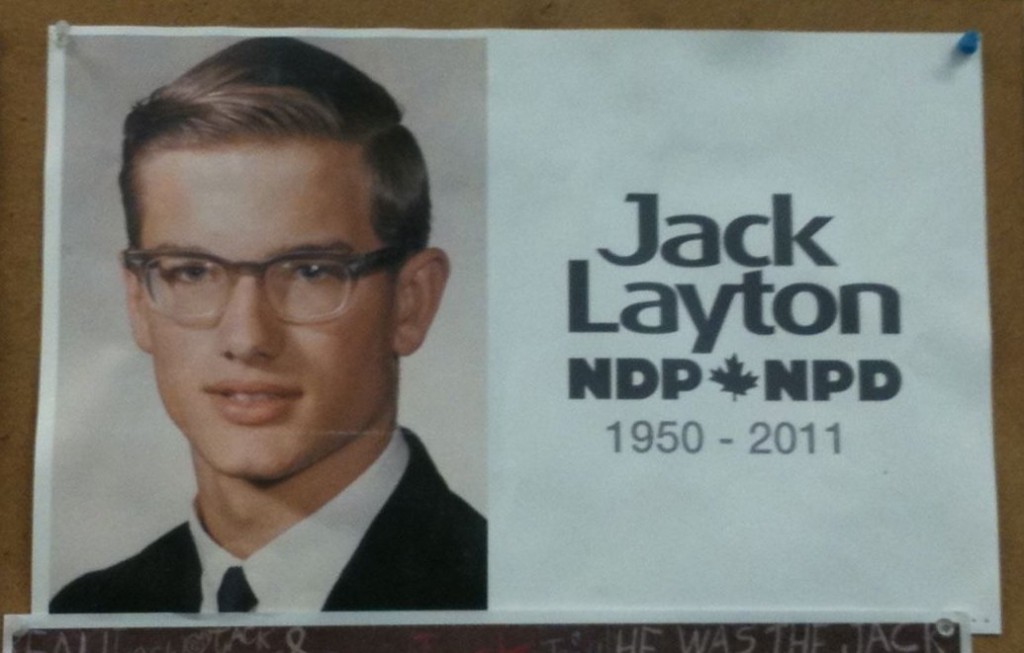Is it still called the Uncanny Valley if the image isn’t computer-generated — just Photoshopped into unnatural plasticity?
Archive for Uncategorized
Marq’ssan and Me
At Wiscon, I overheard a number of conversations about The Marq’ssan Cycle, so I decided to pick up the first book. Ian noticed me buying Alanya to Alanya and simply said, “You should get them all.” Me, I grow bored with books very easily and wanted to sample one before committing to the others. But I think that hearing good things about them from people like Ian and futuransky should have been a clue.
I read the first chapter in June, liked it immediately, but let the book languish on my nightstand for a few months — I read a few eBooks in the interim. This morning, I finally finished Alanya to Alanya and I’m thinking about the fact that I’m not likely to get the next one in the series until Wiscon rolls around again. Hm. I just noticed that I can buy the eBook from Aqueduct. That doesn’t seem like a bad idea.
Gold Rush in Haiti! – Who will get rich?
Haiti Grassroots Watch has produced an 11-minute video on the gold exploration activities taking place in the north of Haiti by Canadian and U.S. companies.
Fauxpology on our “non-ethnic” $100 Bill
The Bank of Canada apologized Monday for the removal of an image of an “Asian-looking” woman from its design for new $100 bank notes.
Governor Mark Carney said in a statement the bank will review the design process that led to the image being removed.
“I apologize to those who were offended — the Bank’s handling of this issue did not meet the standards Canadians justifiably expect of us,” he said.
“Our bank notes belong to all Canadians, and the work we do at the Bank is for all Canadians.”
[…]
The Chinese Canadian National Council, who last week decried the move as “racist,” had mixed responses to the apology within their ranks.
Victor Wong, national director of the CCNC, called the apology a “win-win” at a Monday afternoon press conference.
Wong said he spoke to Carney on the phone Monday and offered to help with the review process. He said he is hopeful the bank will change their policy to reflect the diversity of Canada.
“Even if you look at the $5 bill, you have kids playing hockey. You go to any neighbourhood and you’ll see Sikh kids playing hockey,” he said.
But May Lui, director of the CCNC’s Toronto chapter, called Carney’s statement a “non-apology.”
“Saying, ‘I apologize to those who were offended’ is not really an apology,” she said. “There’s a larger systemic issue around how the Bank of Canada imagines who they are portraying as a real or genuine Canadian.”
– “Bank of Canada apologizes for ‘Asian-looking’ woman debacle”, Toronto Star
Canada embraces “neutral”, “non-ethnic” look for people depicted on our money.
OTTAWA – The Bank of Canada purged the image of an Asian-looking woman from its new $100 banknotes after focus groups raised questions about her ethnicity.
The original image intended for the reverse of the plastic polymer banknotes, which began circulating last November, showed an Asian-looking woman scientist peering into a microscope.
The image, alongside a bottle of insulin, was meant to celebrate Canada’s medical innovations.
But eight focus groups consulted about the proposed images for the new $5, $10, $20, $50 and $100 banknote series were especially critical of the choice of an Asian for the largest denomination.
“Some have concerns that the researcher appears to be Asian,” says a 2009 report commissioned by the bank from The Strategic Counsel, obtained by The Canadian Press under the Access to Information Act.
“Some believe that it presents a stereotype of Asians excelling in technology and/or the sciences. Others feel that an Asian should not be the only ethnicity represented on the banknotes. Other ethnicities should also be shown.”
A few even said the yellow-brown colour of the $100 banknote reinforced the perception the woman was Asian, and “racialized” the note.
The bank immediately ordered the image redrawn, imposing a “neutral” ethnicity for the woman scientist who, now stripped of her “Asian” features, appears on the circulating note. Her light features appear to be Caucasian.
[…]
Harrison declined to provide a copy of the original image, produced by a design team led by Jorge Peral of the Canadian Bank Note Co.
Nor would he indicate what specific changes were made to the woman researcher’s image to give her a so-called “neutral,” non-ethnic look. He said the images were “composites” rather than depicting any specific individual.
The Strategic Counsel conducted the October 2009 focus groups in Calgary, Toronto, Montreal and Fredericton, at a cost of $53,000.
The Toronto groups were positive about the image of an Asian woman because “it is seen to represent diversity or multiculturalism.”
In Quebec, however, “the inclusion of an Asian without representing any other ethnicities was seen to be contentious.”
– “Asian-looking woman nixed from $100 bills”, Montreal Gazette
The whole article has me gobsmacked. Like, apparently there’s a policy against showing “ethnic” people on Canadian money. What? And the comment from the person in Fredericton. Holy crap.
Thought for the Day
An abortion would have absolutely been better for my mother. An abortion would have made it more likely that she would finish high school and get a college education. At college in the late 1960s, it seems likely she would have found feminism or psychology or something that would have helped her overcome her childhood trauma and pick better partners. She would have been better prepared when she had children. If nothing else, getting an abortion would have saved her from plunging into poverty. She likely would have stayed in the same socioeconomic strata as her parents and grandparents who were professors. I wish she had aborted me because I love her and want what is best for her.
– Lynn Beisner, “I wish my mother had aborted me”, The Guardian
I find this a powerful piece.
Will there be a last letter?
In Iceland I laid the first stone of an imaginary film. That summer I had met three children on a road and a volcano had come out of the sea. The American astronauts came to train before flying off to the moon, in this corner of Earth that resembles it. I saw it immediately as a setting for science fiction: the landscape of another planet. Or rather no, let it be the landscape of our own planet for someone who comes from elsewhere, from very far away. I imagine him moving slowly, heavily, about the volcanic soil that sticks to the soles. All of a sudden he stumbles, and the next step it’s a year later. He’s walking on a small path near the Dutch border along a sea bird sanctuary.
That’s for a start. Now why this cut in time, this connection of memories? That’s just it, he can’t understand. He hasn’t come from another planet he comes from our future, four thousand and one: the time when the human brain has reached the era of full employment. Everything works to perfection, all that we allow to slumber, including memory. Logical consequence: total recall is memory anesthetized.
After so many stories of men who had lost their memory, here is the story of one who has lost forgetting, and who — through some peculiarity of his nature — instead of drawing pride from the fact and scorning mankind of the past and its shadows, turned to it first with curiosity and then with compassion. In the world he comes from, to call forth a vision, to be moved by a portrait, to tremble at the sound of music, can only be signs of a long and painful pre-history. He wants to understand. He feels these infirmities of time like an injustice, and he reacts to that injustice like Ché Guevara, like the youth of the sixties, with indignation. He is a Third Worlder of time. The idea that unhappiness had existed in his planet’s past is as unbearable to him as to them the existence of poverty in their present.
Naturally he’ll fail. The unhappiness he discovers is as inaccessible to him as the poverty of a poor country is unimaginable to the children of a rich one. He has chosen to give up his privileges, but he can do nothing about the privilege that has allowed him to choose. His only recourse is precisely that which threw him into this absurd quest: a song cycle by Mussorgsky. They are still sung in the fortieth century. Their meaning has been lost. But it was then that for the first time he perceived the presence of that thing he didn’t understand which had something to do with unhappiness and memory, and towards which slowly, heavily, he began to walk.
I generally say that I have three favourite movies:
- Annie Hall;
- Casablanca; and
- Sans Soleil.
I’ve mentally debated that third one for the last year or two. It’s been a while since I’ve watched it again, and I’m not quite sure it’d still hold up. And there are a lot of movies that I really, really like and am happy to watch over and over again. The Shawshank Redemption and Cinema Paradiso and The Godfather and The Whale Rider. But it’s been part of my standard answer to “what’s your favourite movie” for probably a decade.
Anyway, all of this to say that it was a shock to my system to learn that Chris Marker — the director of Sans Soleil — passed away on the weekend. I don’t know many people who are familiar with the film. Certainly, he’s better known for his earlier film, La Jetée. But even that’s pretty obscure if you’re not a cappuccino-swirling film snob. It might help you to know that Terry Gilliam’s film, 12 Monkeys is hugely inspired by La Jetée. Gilliam added plot and context and unforgettable visuals, but the main narrative thread is lifted directly from Marker’s film.
Australian Rules?
At the request of Mayor Rob Ford’s executive committee and council’s government management committee, city elections officials are now studying a proposal to switch to a ranked ballot system. Councillor Paul Ainslie, the government management chair and a Ford ally, said he plans to bring the proposal to the council floor in November.
[…]
The ranked ballot system typically works as follows. Instead of choosing a single candidate, as they do now, voters are free to rank candidates in the order they prefer them. (A “1” for their favourite, a “2” for their second favourite, “3” for their third.) If a candidate gets a majority of first-place votes — more than 50 per cent — the election is over.
But if no candidate gets a majority of first-place votes — say, if the most popular candidate has 35 per cent — the least popular candidate is eliminated, and the second-place votes of that candidate’s supporters are added to the totals of the candidates who remain. This process of elimination and addition, known as an instant runoff, continues until someone has a majority.
– “Toronto votes: Ranked ballots for 2018? Toronto city council may vote on changing its election system”, The Toronto Star

